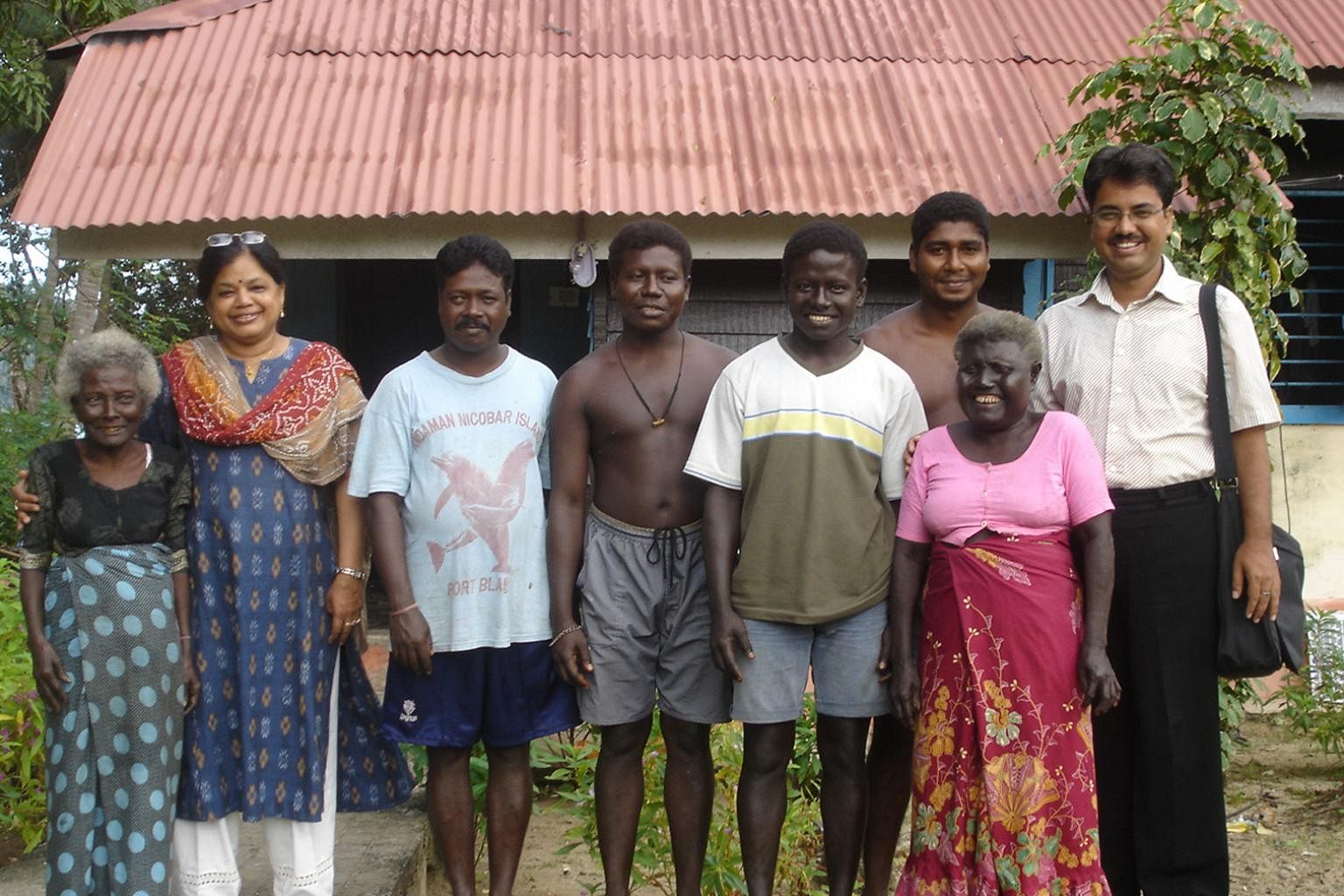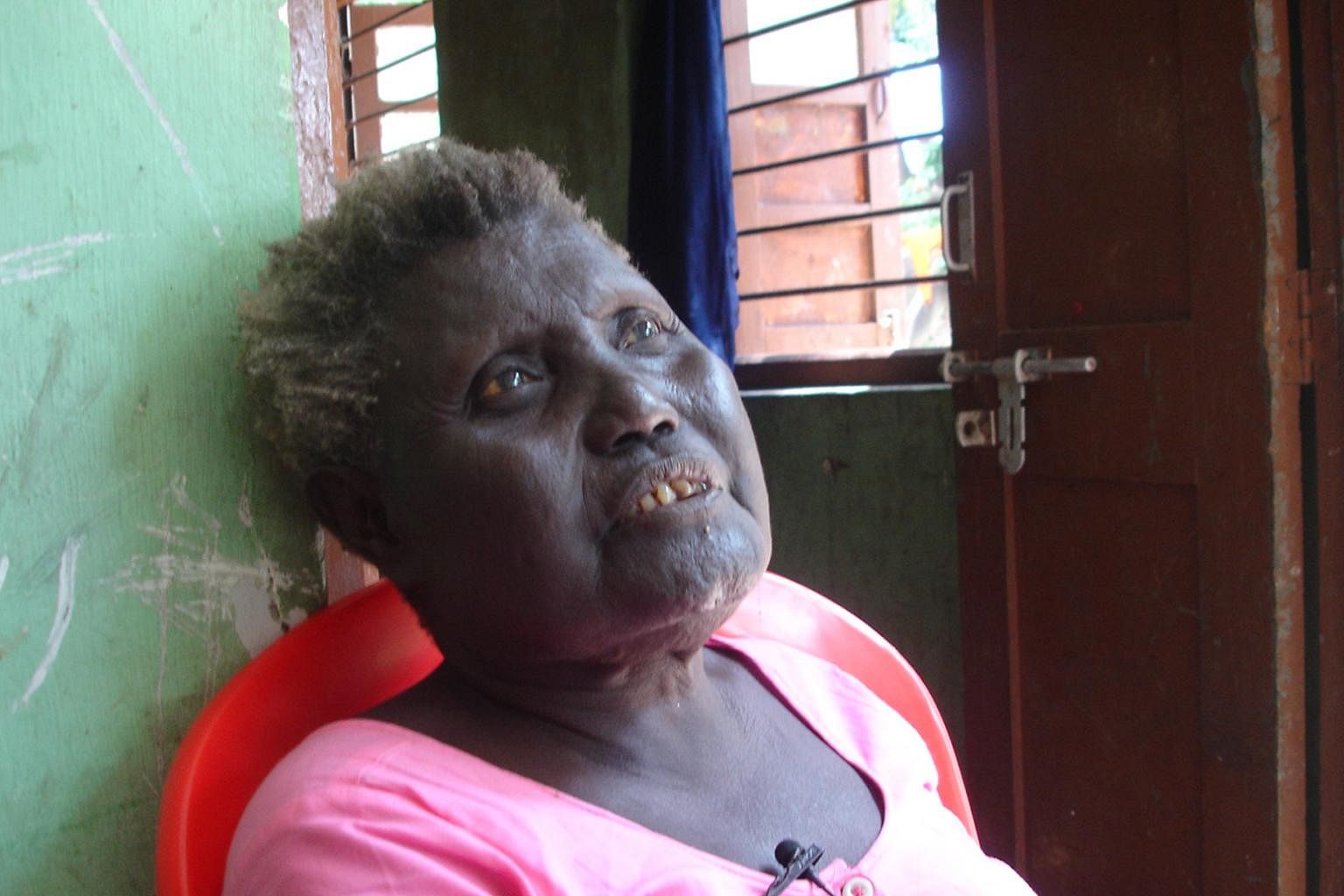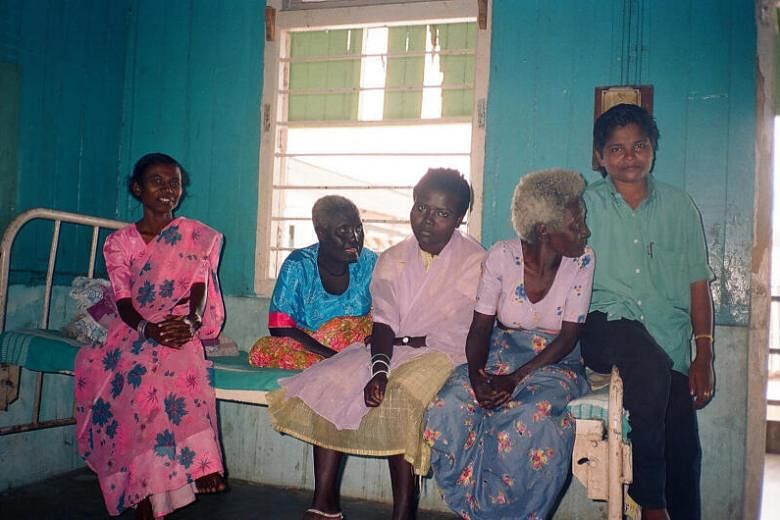NEW DELHI - It was an e-mail from a friend on April 5 that told linguist Anvita Abbi of Mrs Licho's death. As she let the news sink in, Dr Abbi knew she had lost not just a dear friend but also a bridge to one of the world's oldest surviving languages spoken in the Andaman and Nicobar islands in the Bay of Bengal.
Mrs Licho, in her early 60s, died the day before in a hospital in Port Blair. She was the last speaker of Sare, one of the two surviving languages of the Great Andamanic family of languages estimated to be as old as 70,000 years - a veritable treasure trove of India's diverse linguistic heritage. While the people are referred to as Great Andamanese, their languages are clubbed under the Great Andamanic family.
However, amid a focus on the Covid-19 pandemic, the tragic milestone of Mrs Licho's, as well as Sare's death, has gone by almost unnoticed.
Linguicide - the term for a language's death - has turned into a disturbingly recurring phenomenon. Between 1950 and 2010, 230 languages went extinct, according to the Unesco Atlas of the World's Languages in Danger. Many linguists estimate that half of the world's remaining 6,500 languages will be dead by the end of this century.
It is a crisis that should be of concern because languages are much more than perfunctory communication tools. They are rich tapestries of how people perceive their world, offering unique insights into their lives and cultures. Languages are also storehouses of rare knowledge accumulated across generations - information, for instance, about local medicinal plants and climate that remain undeciphered by the rest of the world.
In the case of Sare and other Great Andamanic languages, they tell the story of people who were among the direct descendants of our ancestors who landed in India around 70,000 years ago as part of the "Out of Africa" migration. It was from here that humans spread wider to east Asia and even as far as Australia. With Mrs Licho's death, one of the few last windows to that world that remained open to us has been slammed shut.
Dr Abbi's and her colleagues' linguistic work with Mrs Licho, spanning nearly two decades, documenting and preserving the Great Andamanic languages, has brought us unique insights into the worldview of the Great Andamanese people. One such example is the Sare word "raupuch". It is an adjective for a person who has lost his or her siblings. While languages we know make do with a word for those who lose their parents or spouse, the presence of a word like "raupuch" tells us how important family kinship was for the Sare-speaking people. It is a word also shared by other Great Andamanic languages.
Sare speakers even built their language around the human body, which for them was perceived as a key possession. The body is divided into seven zones, each designated by a prefix that is attached to nouns, verbs, adjectives and other grammatical categories. For instance, the prefix er- denotes an external body part, whereas e- denotes an internal one.
To better understand how this impacts their language, consider the word "beautiful". The word for it in Sare is "bungoi" but it is rendered as "e-bungoi", implying how the Sare-speaking people perceive beauty as an innate attribute. "Leaf" ("tech" in Sare), on the other hand, is prefixed with er- because it is considered an external part of the tree's body, just like "hand" (er-tong) is perceived as external.

Dr Abbi thinks this centrality of the human body in Sare language is because the Great Andamanese people survived as hunter-gatherers for generations until the late 19th century. "Since they were remnants of one of the most ancient civilisations on earth, they related to the world through their body," she said.
It is such insights that we lose every time a language passes into silence. Before Mrs Licho died and took Sare with her, Mrs Boa Sr, 85, died in 2010 in Port Blair. Along with her also died Bo, another Great Andamanic language. She is immortalised online in a video, singing in Bo and describing the earth quivering during the 2004 earthquake and tsunami as a tree falls with a thud.
Khora, another of the 10 Great Andamanese languages, was extinguished in 2009 with the death of its last speaker, Mrs Boro Sr.
Dr Abbi, who also worked with Mrs Boa Sr, remembers her often speaking to birds in Bo. When Dr Abbi asked her why she spoke to them in Bo, Mrs Boa Sr told her they were her ancestors who understood what she said. "When a language has only one speaker left alive, it is indeed very sad," said Dr Abbi. "Boa Sr lamented again and again that others were not speaking their native language. She thought of her native language as a psychological balm in times of stress."
The intangible heritage of the Great Andamanese people, which has been passed down the generations for thousands of years, now teeters on the precipice of oblivion. From 10 speakers of Great Andamanic languages in 2001 when Dr Abbi began working on preserving them, to just three today, the linguistic identity of one of India's oldest communities is on its last legs. While some died, others have forgotten the language because of lack of use. "When they die, the entire family of Great Andamanic languages will go extinct. This is most worrisome," Dr Abbi told The Straits Times.
The three community elders are more than 50 years old and speak Jero, one of the 10 languages that were originally spoken by the 10 tribes that made up the Great Andamanese community. They also speak what is known as Present Great Andamanese (PGA) language, a koiné (mixture) that is understood by members from the different tribes. It draws its vocabulary from four North Andamanese languages (Bo, Khora, Sare, and Jero), but bases its grammar on Jero.
The Great Andamanese people are among the several indigenous communities in the Andaman and Nicobar archipelago. While they number around 60 today, they were estimated to be as many as 7,000 at the end of the 19th century. Their numbers fell drastically as imported diseases such as measles and influenza, alcohol and British colonial wars ravaged them. The Covid-19 pandemic, caused by a novel virus, is an apt reminder of the threat faced by these vulnerable communities who remain especially susceptible to modern-day infections.
The Great Andamanese were moved by the government to the tiny Strait Island in 1970 as a measure to protect them from outsiders. Since then, they have gone on to become dependent on government aid for survival and suffer from problems such as alcohol abuse and tuberculosis. Reduced from a position of strength in their traditional hunter-gatherer lifestyle, they have today been stripped of their self-sufficiency and identity. The Indian Express, a daily newspaper, described one such member of the community, Mr Elpe, as someone who "spends most of his time on the streets of Port Blair begging for money to buy alcohol".
Their languages have fared worse, in keeping with a global trend of dwindling linguistic diversity that is emblematic of deep structural violence against marginalised communities. In Sare's case, this arose from state apathy and the onslaught of major languages such as Hindi and English in the archipelago.

The Great Andamanic languages as well as the PGA are not taught at any schools or anganwadis (childcare centres), stripping them of any institutional support that is vital to sustain any language. "There is a kind of inferiority complex that the community has developed in speaking their languages. The oppression may look internal but the source is external," said Dr Abbi.
Mr Frederico Andrade, the co-founder of Wikitongues, a crowdsourced project that aims to archive every language in the world, has argued that most languages die because they are made unviable. Their death is a silent and protracted one, with no fanfare. "This form of language loss is a cancer, not a gunshot," he told National Geographic.
Dr Abbi had even suggested to the local administration in 2008 that a script she and her colleagues had developed be adopted to teach PGA at a local anganwadi but the proposal made no headway.
Mrs Licho is survived by her husband and four children. None of her children - like most others in the community - speak PGA or any other indigenous language.
"The Government of India, or the Andaman administration specifically, doesn't take any interest in having these languages taught because it doesn't think they are worth protecting and learning," Dr Abbi said. "We talk of protecting the heritage of India - saving these languages is one way to do it."
Languages spoken by other indigenous communities in the archipelago, such as the Onges and the Sentinelese are by default better protected because of the speakers' limited interaction with outsiders and the self-sufficiency they have retained. The Sentinelese, for instance, were in the news in November 2018 when they killed an American missionary who defied Indian law to travel to North Sentinel island, where they live.
While Mrs Licho did not die because of Covid-19 - she suffered from other diseases including tuberculosis and asthma - the archipelago's indigenous communities also remain vulnerable to the pandemic as well as other threats that emanate from outside. This is especially true of the Jarawas who trade with settlers living next to their reserve and have come to depend on them for food items.
Their habitat is also bisected by a controversial major road, the Andaman Trunk Road (ATR), that ferried busloads of tourists curious about spotting Jarawas in the pre-pandemic days - a trend that has been condemned as "human safaris".
The local administration said it has taken adequate precaution, including moving the Jarawas deeper into their reserves to prevent any potential infection from outsiders, but they still remain vulnerable.
The islands have so far recorded 33 cases of Covid-19. Mercifully, all of them recovered and have been discharged.
The fate of the Jarawas is a concern that haunted Mrs Licho, who worked as an office helper in the education department in Port Blair. She thought they too would be decimated like the Great Andamanese people and opposed the construction of the ATR through the territory of the Jarawas. "She was a forthright person and quite a fighter when it came to the rights of tribals," Dr Abbi said. "I would see her barging into the room of senior government officials and boldly present her case."
Mrs Licho's campaign to ensure justice for the indigenous communities in the Andaman and Nicobar islands must go on. Besides empowering these communities to take decisions instead of foisting ours on them, a better future must also create a secure space for their languages and cultures to prosper. The heritage these descendants of the first settlers of South and South-east Asia represent belongs not just to India but to humanity at large.


